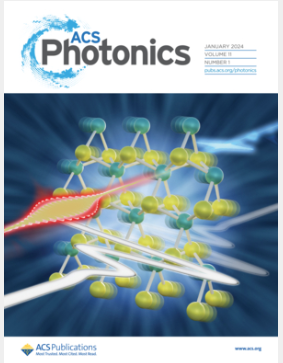Ultrafast Terahertz Emission in Centrosymmetric Films Driven by Nonlinear Photon-Drag Injection Currents
IF 6.7
1区 物理与天体物理
Q1 MATERIALS SCIENCE, MULTIDISCIPLINARY
引用次数: 0
Abstract
The nonlinear injection photocurrent, a second-order photogalvanic effect absent in centrosymmetric structures, can be revived by the photon-drag effect (PDE), leading to efficient terahertz (THz) radiation. Previous studies on THz emission from centrosymmetric films under oblique incidence attributed the effects to PDE-induced nonlinear photocurrents, and pump polarization-dependent THz emission was analyzed usually with the material’s point group. However, these studies overlooked two critical issues: (1) the distinction between the photon-drag shift and injection currents in transient THz radiation and (2) the irrelevance of pump polarization-dependent THz emission to the point group in centrosymmetric materials. Our theoretical analysis reveals that when the band velocity of conduction bands is a substantial difference from that of valence bands, the photon-drag injection current dominates in thin films with inverse symmetry following optical excitation, while the nonlinear photon-drag shift current is negligible. This theory is supported by ultrafast THz emission spectroscopy on a 1T′-MoTe2 film and aligns well with existing literatures. This study introduces a new efficient THz emitter and enhances the understanding of nonlinear photon-drag currents in centrosymmetric materials, potentially guiding the design of THz radiation devices.

非线性光子拖动注入电流驱动的中心对称膜超快太赫兹发射
非线性注入光电流是中心对称结构中不存在的二阶光电效应,它可以通过光子拖动效应(PDE)恢复,从而产生有效的太赫兹(THz)辐射。以往对中心对称薄膜在斜入射下的太赫兹辐射的研究将其归因于pde诱导的非线性光电流,并且通常用材料的点群来分析泵浦极化相关的太赫兹辐射。然而,这些研究忽略了两个关键问题:(1)瞬态太赫兹辐射中光子拖移和注入电流的区别;(2)中心对称材料中泵浦极化相关的太赫兹辐射与点群的不相关性。我们的理论分析表明,当导带的能带速度与价带的能带速度相差很大时,光激发后的逆对称薄膜中光子拖动注入电流占主导地位,而非线性光子拖动移位电流可以忽略不计。这一理论得到了1T’-MoTe2薄膜上的超快太赫兹发射光谱的支持,并与现有文献很好地吻合。本研究引入了一种新型的高效太赫兹发射器,增强了对中心对称材料中非线性光子拖动电流的认识,有可能指导太赫兹辐射器件的设计。
本文章由计算机程序翻译,如有差异,请以英文原文为准。
求助全文
约1分钟内获得全文
求助全文
来源期刊

ACS Photonics
NANOSCIENCE & NANOTECHNOLOGY-MATERIALS SCIENCE, MULTIDISCIPLINARY
CiteScore
11.90
自引率
5.70%
发文量
438
审稿时长
2.3 months
期刊介绍:
Published as soon as accepted and summarized in monthly issues, ACS Photonics will publish Research Articles, Letters, Perspectives, and Reviews, to encompass the full scope of published research in this field.
 求助内容:
求助内容: 应助结果提醒方式:
应助结果提醒方式:


